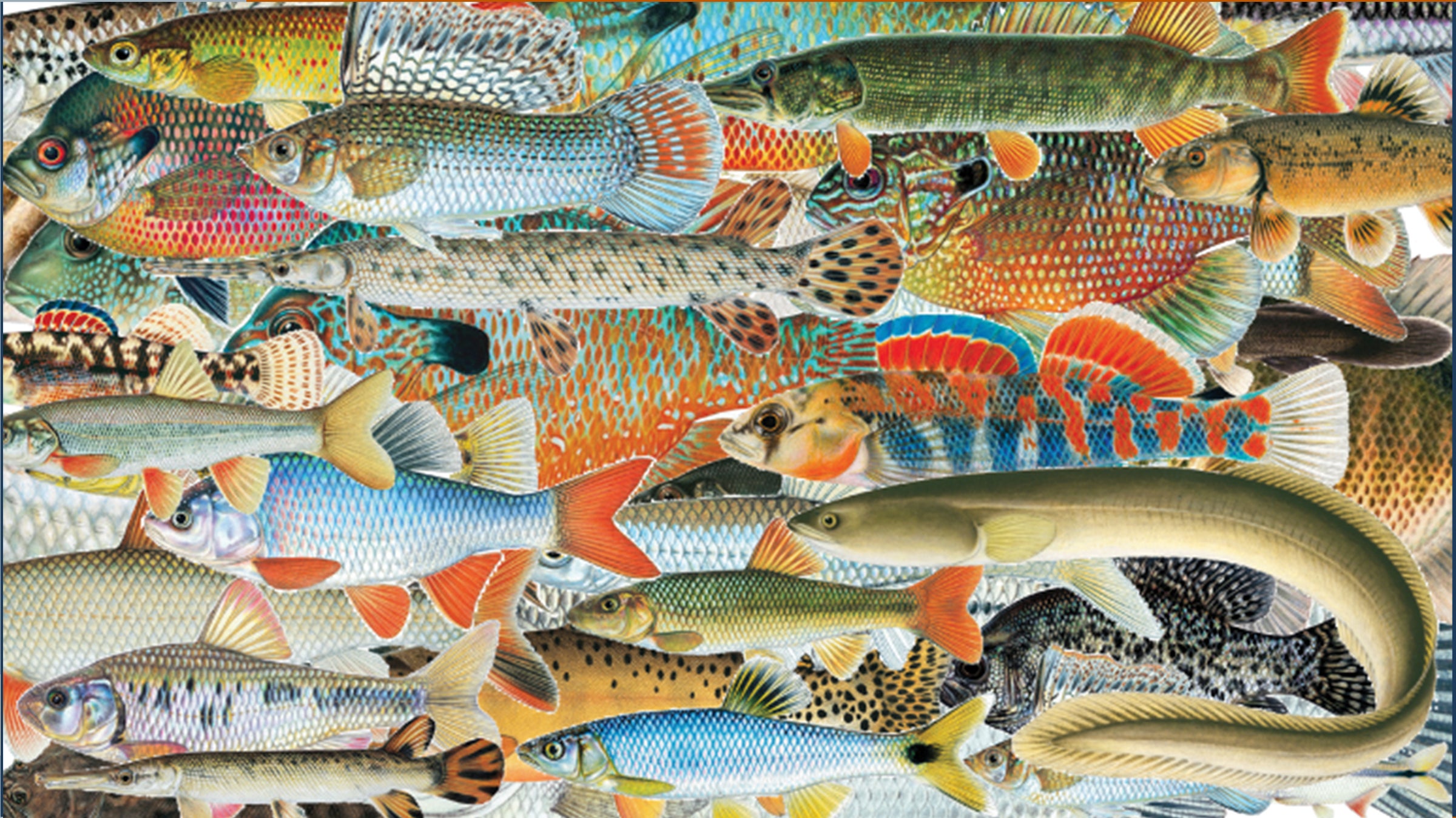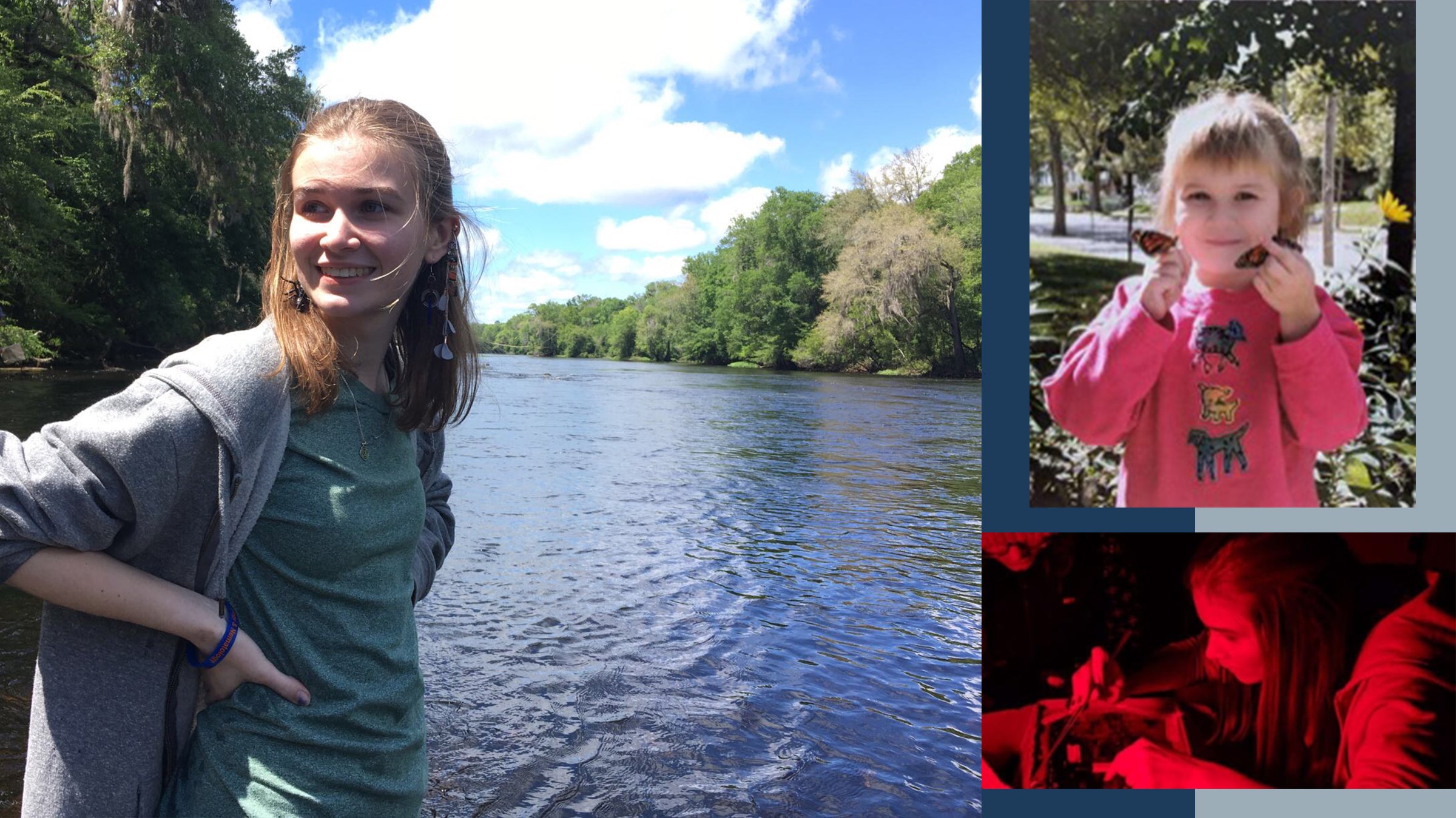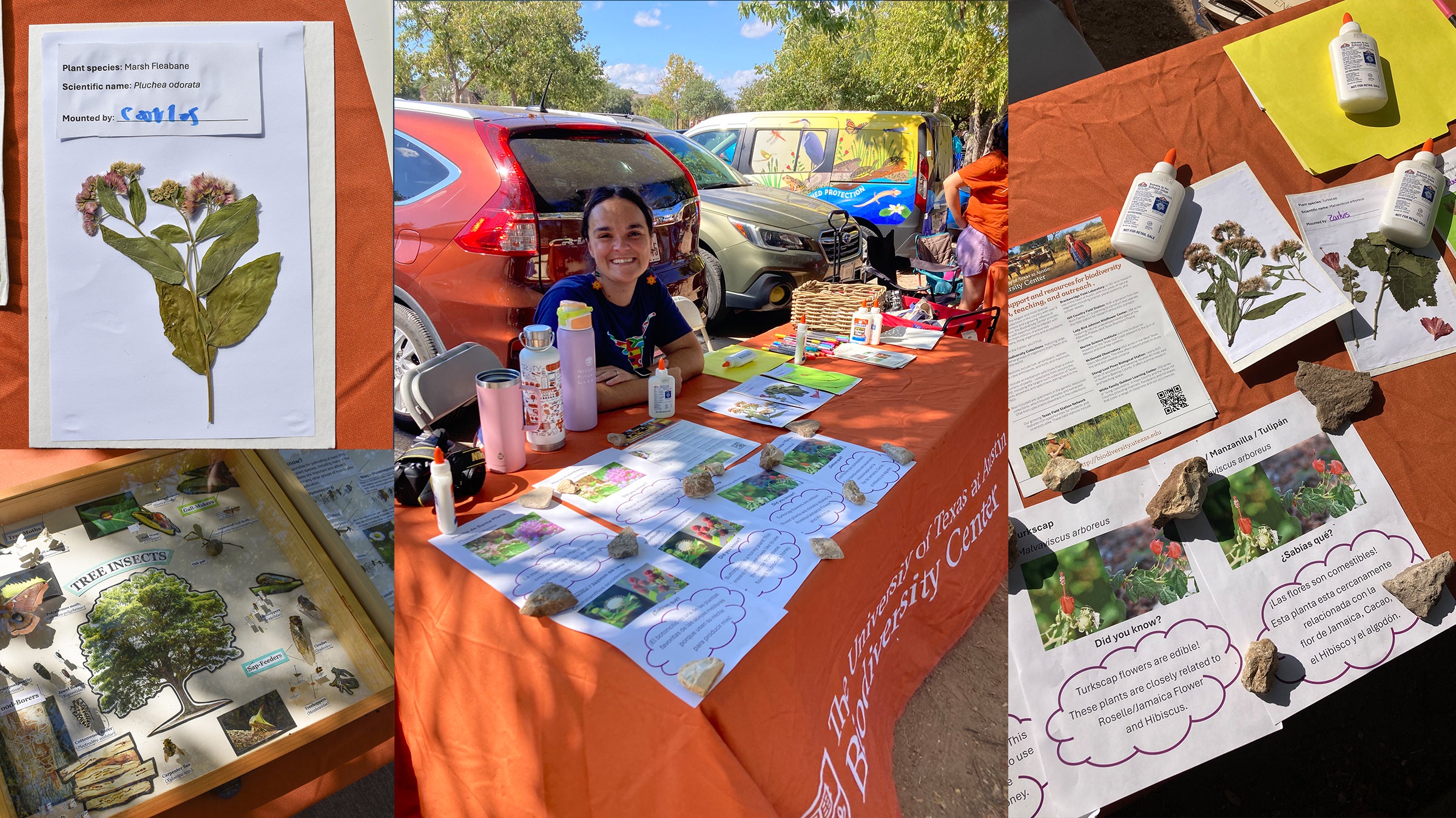Fishes of Texas and Natural Resource Conservation

Illustrations by Joseph Tomelleri
The University of Texas Biodiversity Center Icthyology Collection holds over 73,000 jars with more than 1.7 million specimens of 1,785 species. Most (>75%) are from Texas freshwaters, representing 216 counties. However, the Fish Collection is much more than rows of jars full of dead fishes. In addition to being critical for such things as documenting biodiversity, biogeography, and documenting the morphological variation within and among species, the Fish Collection also plays a critical role in conservation of natural resources.
For decades we have partnered with Texas Parks & Wildlife Department (TPWD) to aid in efforts to protect and restore the aquatic natural resources of Texas. Support from TPWD was critical in our efforts to develop the Fishes of Texas project (FoTX), which began in 2006. Recognition by TPWD of the value of reliable data for use in rigorous, quantitative research applicable to on-the-ground conservation is exemplified by their investment in FoTX of more than $2 million over the last 15 years. Through the project’s web interface, users can access the fully georeferenced database that includes all of our specimens and all other known specimens (from 42 other fish collections) of fishes from Texas, dating back to 1850. It is among the highest quality regional fish-occurrence databases in the world.
Researchers, resource managers, and the general public now use the website, with about 35 visiting it each day. Professionals, in particular, have become aware of the utility of the database and how it can benefit their work. Examples include field guides (Page and Burr 2011), documentation of species ranges (Craig and Bonner 2019) and range expansions (Martin et al. 2012), historical community composition (Labay et al. 2011), bioassessments (Labay and Hendrickson 2014, Labay et al. 2015, Labay et al. 2019), biodiversity conservation (Cohen et al. 2013, Birdsong et al. 2018, Cohen et al. 2018, Birdsong et al. 2019, Garrett et al. 2019, Magnelia et al. 2019, Mayes et al. 2019), endangered species (USFWS 2014, WildEarth Guardians 2020), and invasive species (Poulos et al. 2012, Cohen et al. 2014, McGarrity 2019). At the recent annual meeting of the Texas Chapter of the American Fisheries Society, 90% of the presentations dealing with the sort of information and products provided by FoTX, utilized it. We also recently put all of the Fishes of Texas data in online global data aggregators (GBIF, iDigBio, and VertNet) in an effort to reach even more users. We expect this to dramatically increase use of the data.
Website users can search the FoTX database by species, institution, collector, county, ecoregion, river basin, Native Fish Conservation Area, etc. The multiple data layers (e.g., native range, Native Fish Conservation Areas, watersheds, river basins, hydrology, counties) in its maps allow users to explore numerous questions about species distributions over time, as well as link to the specific details of each of the collection events. One can also access brief descriptions of the taxonomy and biology for any species, or generate checklists of the species found in various geographic areas, ranging from state-wide or county to major rivers or their sub-basins. Taxonomic keys for species identification, and species distribution models that estimate probabilities of finding species in gaps in the occurrence data, are also available.
The applications of FoTX to conservation are numerous. Its high-quality data improve understanding of species’ distributional history (serving as a baseline), current conservation status, and provide insights into factors affecting the future of the state’s fauna. For example, historical ranges and subsequent range changes, coupled with our species distribution models, tell us much about how community ecology, demographic changes, habitat loss, the spread of invasive exotics, and impacts of climate change affect species distributions. Those insights then support conservation planning and policy decisions by TPWD and others.
The FoTX database in general, and its species distribution models in particular, were foundational for development of the Texas Native Fish Conservation Areas (NFCA) Network (Birdsong et al. 2019). This TPWD program is a holistic, multispecies, and habitat-based approach to conservation at the watershed scale that is now at the heart of aquatic ecosystem conservation efforts in Texas. The springs, ciénegas, creeks, rivers, and associated watersheds comprising the NFCAs have been determined to be of highest priority for preservation of the Texas freshwater fish fauna. The Texas NFCAs Network enables a strategic focus on collaborative, science-based stewardship of native freshwater fishes. It has increased awareness of the ecological, recreational, and economic values of Texas freshwater systems, and enhanced interest and ability of local landowners, communities, and recreational users to act as advocates and local stewards of these systems. The Texas NFCAs Network has enabled technical guidance on Best Management Practices to more than 850 landowners on more than 450,000 acres, conservation easements protecting more than 30,000 acres of springs, streams, riparian, and upland habitats, and conservation and restoration of over 60,000 acres of springs, creeks, and riparian buffers.
FoTX has also been critical for updating and justifying several types of conservation rankings used regionally and globally. Its data:
- led us to recommend addition of 22 new species and removal of one from the Texas state list of Species of Greatest Conservation Need (SGCN).
- supported updates to the Texas state list of Threatened and Endangered species (Birdsong et al 2020).
- were used to determine regional and global conservation status rankings of Texas fishes in NatureServe (natureserve.org), one of the world’s most-prominent sources of conservation-related data, and to update TPWD’s Texas Natural Diversity Database.

UT Biodiversity Collections staff (right: Melissa Casarez) and TPWD staff (left to right: Alice Best, Stephen Curtis, and Stephan Magnelia) electrofishing on the San Bernard River. FoTX data and the websites’ analysis tools, indicated this river to be one of the most under-sampled in the state, thus prompting this joint sampling effort. (Photo: TPWD River Studies).
Our work with TPWD is ongoing. Currently we work closely with them using FoTX data to find and sample previously under-sampled areas of the state to fill in critical spatial gaps. This work often takes the form of bioblitzes, in which detailed bioassessments are conducted by staff from both TPWD and UT’s Fish Collection, together with local stakeholders and organizations. In addition to fish community data, we also quantify mussel, macro-invertebrate, and riparian assemblages, water quality and quantity, general stream health, and recreational opportunities. These efforts have so far yielded six detailed bioassessments (Robertson 2015, Robertson et al. 2016a, Robertson et al. 2016b, Robertson et al. 2017, Robertson et al. 2018, Robertson et al. 2019), with many more in production at TPWD. This information not only helps TPWD efficiently focus conservation efforts, it also provides aquatic resource management guidance for many State Parks and Wildlife Management Areas. The specimens all end up in the fish collection and are available for future research possibilities.
Utilizing FoTX information, TPWD recently developed a brochure (Bean 2020) on how to identify Texas’ 10 sunfish species (Lepomis), and distinguish them from similar species (e.g., cichlids, tilapia, crappie). In the first week of its availability on social media it had been viewed more than 84,000 times.

Of course, the general public can also use the website directly. In doing so, they can not only identify fishes, and learn more about their biology and where they occur, but hopefully also gain an appreciation for the great diversity of the Texas fish fauna. This will lead many to be more active as local advocates for aquatic resources and increase support for both research and natural resource conservation statewide.




